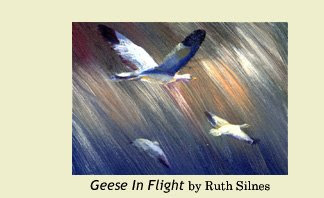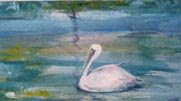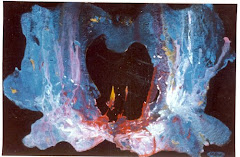We will begin by touching on various aspects of drawing: seeing with the artist’s eye, values, creativity, abstraction, armchair research and where to go from there. The goal is to encourage your artistic abilities. It will be a journey of discovery.
Introduction
It is time for me to pass on what I have learned from my years as a lifelong painter and illustrator, because I have had a wonderful life doing what I love to do.
I have traveled the circuit as an artist, from traditional through impressionistic, from exploration of imaginative cosmic space to atmospheric-nautical with ink, paint, and pastel. In my late years I now use the computer as my art tool. I wrote, illustrated, and published my first book “Keeping Ahead of Winter” after I was eighty-years-old.
I taught oil painting at the San Mateo County Arts Council and taught drawing in my studio at the Twin Pines Art Center, in Belmont CA., now called 1870 Art Center. My work is in the permanent collection of the Peninsula Museum of Art.
Leonardo Da Vinci wrote, “The feeling is what guides you to reach out for the knowledge.”
You will need:· A medium size drawing pad (if you are just starting to draw, buy a newsprint paper pad -- it is cheaper and you will be more relaxed)
· Number 2B, 4B and 6B drawing pencils
· A pocket knife
· Ruler
· Kneaded art eraser
· Charcoal or conte crayon optional
· An Emory board or a small piece of sandpaper stapled to a piece of wood to shape the point of your pencil
· A drawing board, or use plywood or Masonite
. Masking tape to hold your paper on the board
· Fixative to protect the drawing from smearing (hair spray will do the trick)
Art materials can be bought at your local art store or online at: Dick Blick
http://www.dickblick.com/ or Daniel Smith
http://www.danielsmith.com/ ~~~
TO COMMENT: You do NOT need a Google ID. Select any of the other options presented and follow instructions.
 The illustrations above are general proportions. Everyone doesn’t fit the same figure, and bending of the body will throw off the measurements.
The illustrations above are general proportions. Everyone doesn’t fit the same figure, and bending of the body will throw off the measurements.
 In order to get the feeling of motion in your drawing, be relaxed and swing with your pencil. In time you will be able keep your figures in balance. Practice as below.
In order to get the feeling of motion in your drawing, be relaxed and swing with your pencil. In time you will be able keep your figures in balance. Practice as below. Make quick rough action sketches of people you see on the move, get the rhythm of their motion. You don’t have to finish them.
Make quick rough action sketches of people you see on the move, get the rhythm of their motion. You don’t have to finish them. 











No comments:
Post a Comment